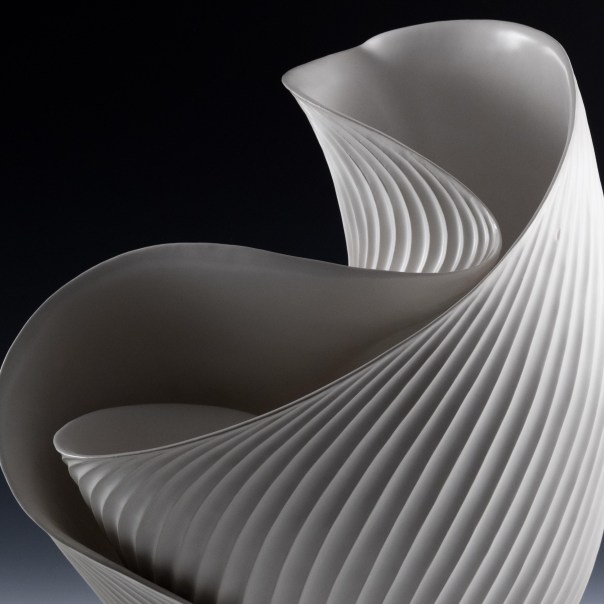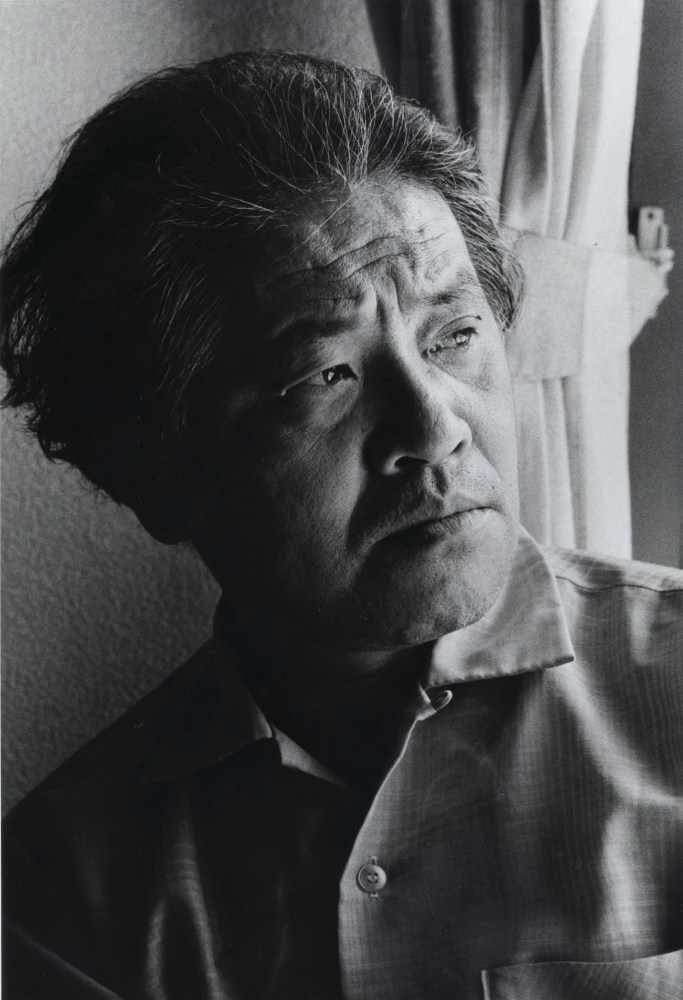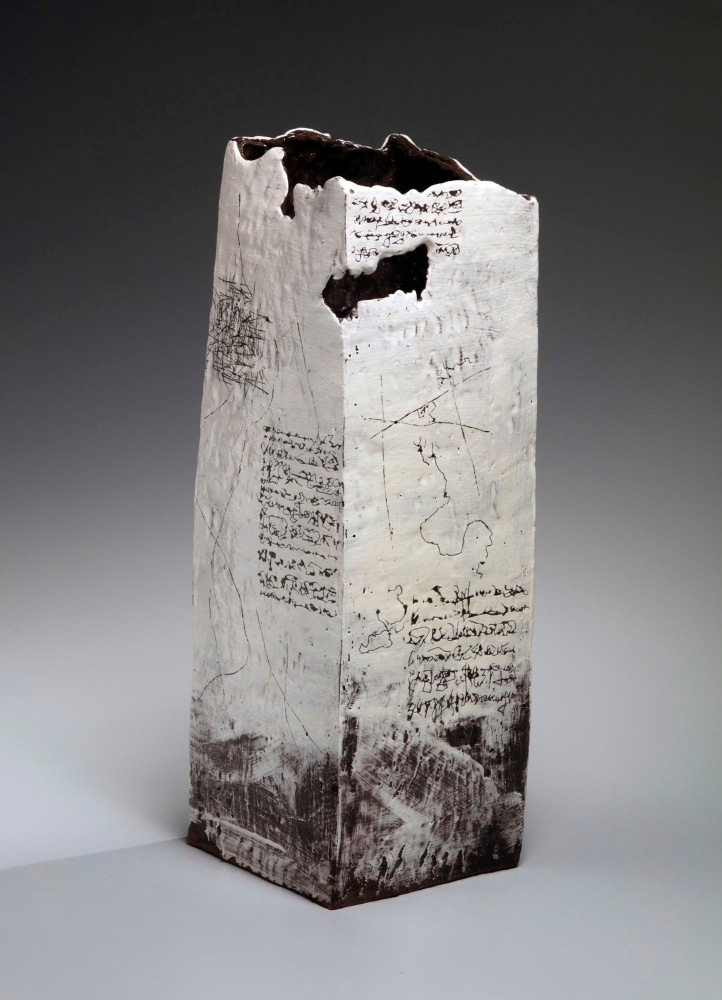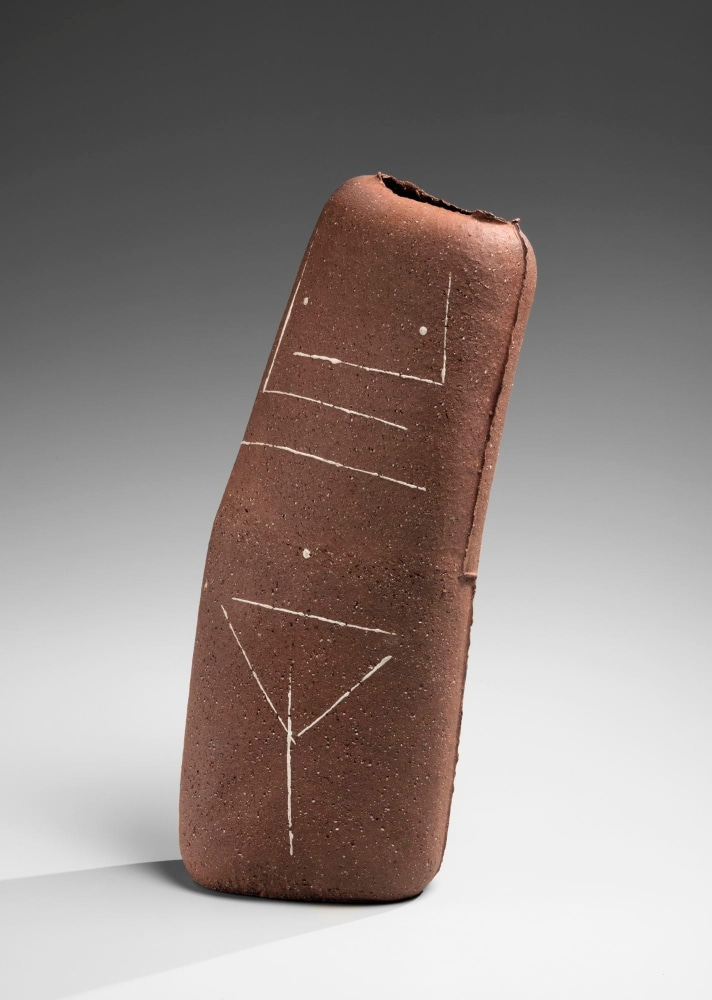

Photography by and courtesy of Fujimori Takeshi

(1918-1979)
Born in Kyoto on July 4, 1918, YAGI KAZUO was the eldest son of ceramist Yagi Issō (1894-73), who excelled at works inspired by Chinese Song Dynasty ceramics. After graduating from the sculpture department of the Kyoto Municipal School of Arts and Crafts (currently Kyoto City University of Arts), Yagi Kazuo became a student at the Ceramics Research Institute in Kyoto, and in 1946 took part in establishing the Young Pottery-makers’ Collective, which was disbanded in mid-1948. Later that year, he co-founded the avant-garde group Sōdeisha as a vehicle for expanding the expressive possibilities of clay.
Yagi focused on the creation of “objects” — neither pure sculpture nor simply vessels. In 1954 at the Form Gallery in Tokyo, he exhibited his now iconic work “Mr. Zamsa’s Walk,” which marked his radical repositioning of the potter’s wheel as a mere mechanical tool instead of the determining factor in the forming process. However, like his Sōdeisha colleagues, Yagi began with utilitarian vessels inspired by modern Western art. In 1962, together with Yamada Hikaru, he established Mon Kōbō (“Corner Workshop”), in which Yamada was responsible for the functional forms and Yagi for the surface patterning.

Yagi was quite comfortable producing sculptural forms and utilitarian vessels simultaneously and respected them equally. He was also the first artist to incorporate smoke-blackened ware into the modern ceramic vocabulary, starting in 1957. This manner of treating the surface allowed the original sharpness of the sculpted clay form to remain visible; moreover, it remained unassociated with any prior Japanese ceramic tradition.
With broad interests in poetry, music, and photography and known for his sarcastic wit and intellect, Yagi inevitably became Sōdeisha’s spokesman. Over time, as its central figure Yagi also assumed the mantle of standard-bearer for contemporary ceramic art in postwar Japan.
Smoke-glazed sculpture of orb with bisecting square insertion
1978
Black smoke-infused stoneware
8 1/2 x 6 x 5 1/4 in.
Inv# 6410
SOLD
White leaning vessel with stamped design of alphabets
1970-1975
Glazed stoneware
4 7/8 x 6 1/4 x 5 7/8 in.
Inv# 7940
SOLD
"Pouring" multi-spouted vessel
early 1970s
Glazed stoneware
7 1/4 x 7 in.
SOLD
Brown stoneware vase with Korean buncheong-inspired white-slip inlay within stamped geometric patterning in the Mishima style
1971
Glazed stoneware
6 1/2 x 9 5/8 in.
SOLD
White, leaning asymmetrical vessel with painted black floral design and scratched patterning
1971
Glazed stoneware
8 3/4 x 8 1/4 x 7 7/8 in.
SOLD
White square box-shaped vessel with diagonally torn mouth and etching abstract design
1966
Glazed stoneware
11 7/8 x 9 3/4 x 9 5/8 in.
SOLD
Concave mold cast white glazed vase with brushed paint effect and center amber glass-glazed pool
1960s
Glazed stoneware
6 1/8 x 6 1/4 x 4 3/8 in.
SOLD
Extraordinarily rare black globular vase with inlaid white slip linear patterning
ca. 1960
Glazed stoneware
11 x 12 5/8 in.
Inv# 7631
SOLD
Vase with incised and scratched flying and standing crane motif
ca. 1959
Glazed stoneware
7 1/8 x 7 1/8 x 7 3/8 in.
SOLD
Irabo–glazed tubular sculpture
ca. 1957
Glazed stoneware
6 x 5 1/2 x 4 1/4 in.
SOLD
Tall, slender white columnar vase with round base and decoration of bird
1949
Glazed stoneware
16 1/2 x 2 3/4 in.
SOLD
